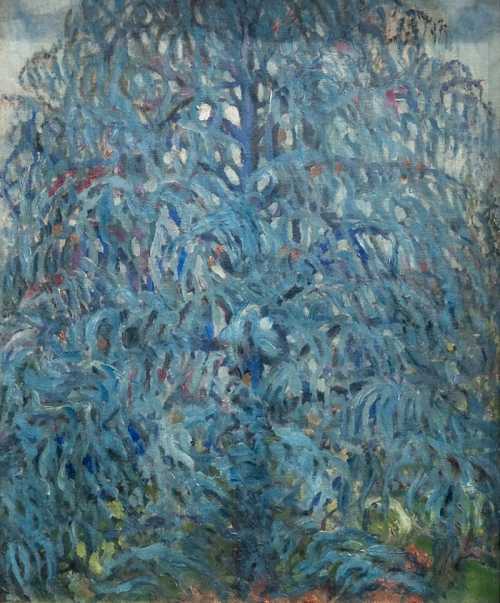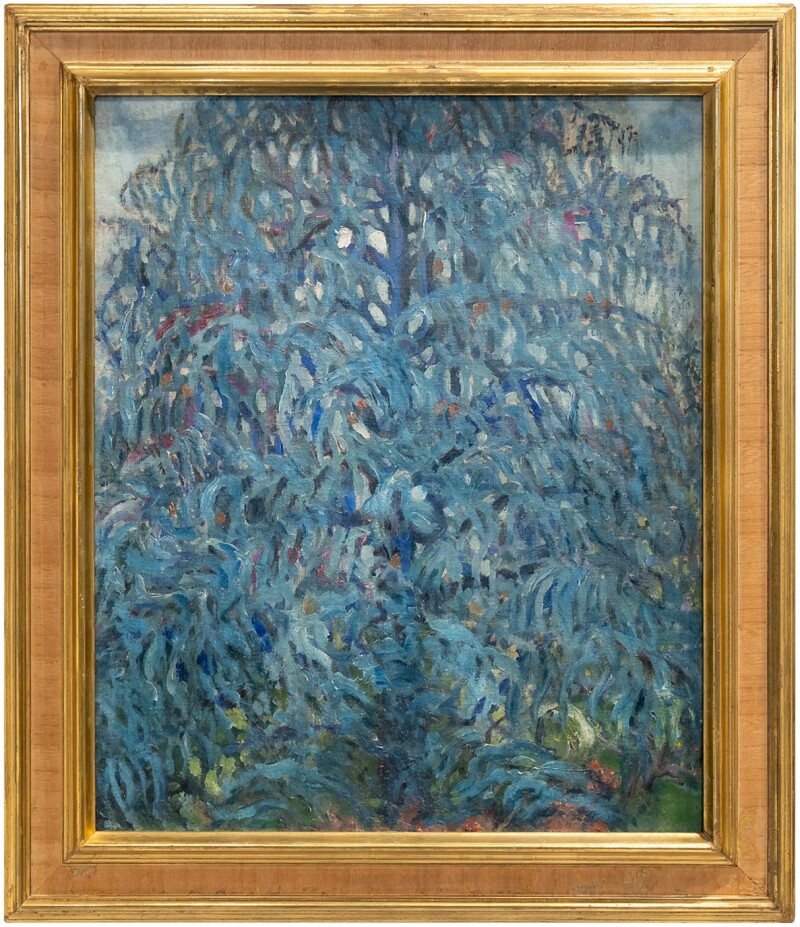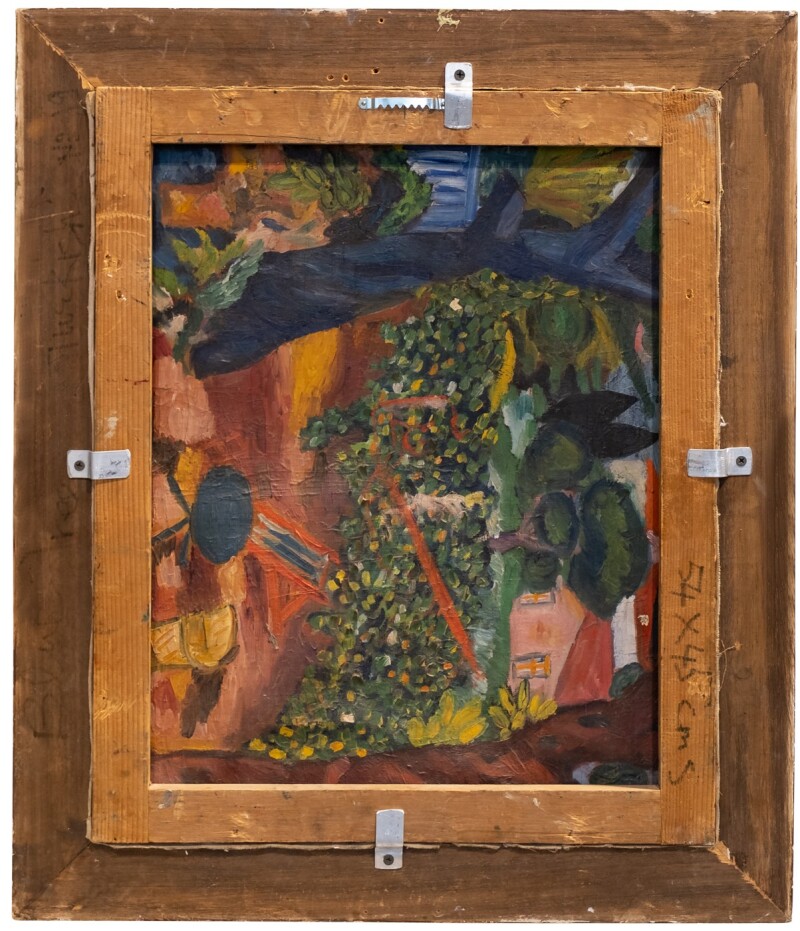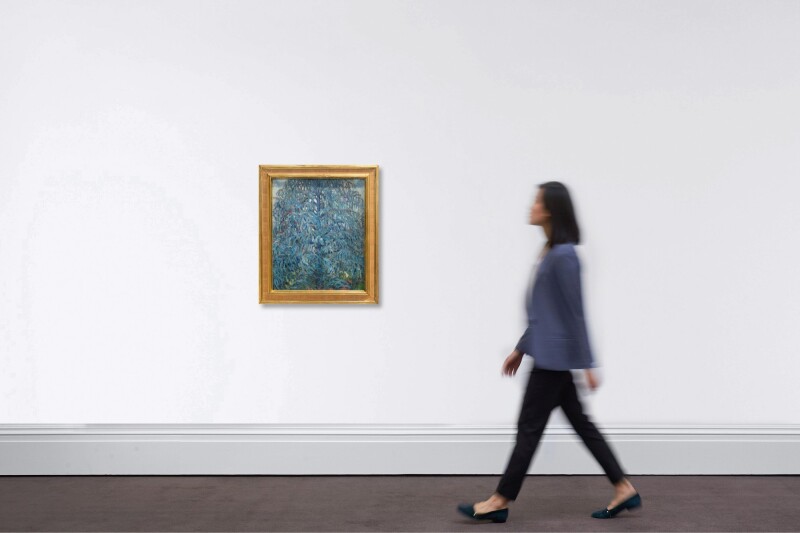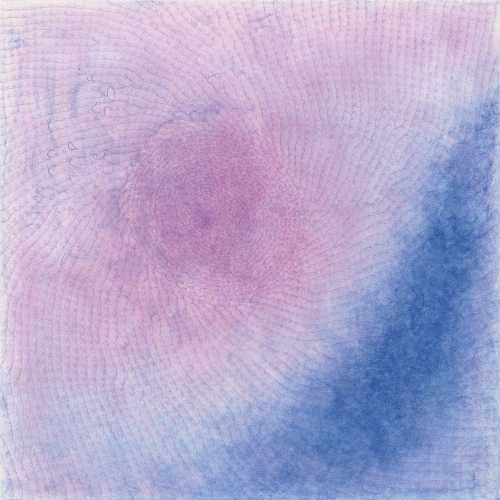- The Blue Tree 1943
- Gouache and oil on canvas
- Painting
- 45 * 54 cm
- framed: 67.5 by 58 cm. 26½ by 22¾ in.
23 March 2022
Estimation
£40,000
52,736 USD
-
£60,000
79,103 USD
Realized Price
£60,480
79,736 USD
20.96%
Artwork Description
“The trees appear almost as free explorations of dynamism and movement for their own sake. If they are a homage to Brueghel, they are also an anticipation of Fahrelnissa’s later abstract kinetics.”
A. LAÏDI-HANIEH, FAHRELNISSA ZEID: PAINTER OF INNER WORLDS, ART BOOKS, 2017
Fahrelnissa Zeid was a key figure of modernism, in Turkish art like in many other aspects of her life. One of the first women to study fine arts in Turkey, her works were often said to feature intricate blends of Islamic and Byzantine patterns infused with Western modernist and abstractionist inspirations. Yet, this vision was deemed Eurocentric by most of her pairs, while the artist revendicated only a universalist vision of art making (Özpınar 2017, p.1). After marrying a member of the Iraqi royal family and first Ambassador of Iraq to Germany, Zeid went on to pursue her artistic career throughout the world. In the course of her long career, Fahrelnissa Zeid explored many styles, techniques and materials, evolving as she moved from Istanbul to Berlin, or from Baghdad to Paris and London.
The Blue Tree was painted in 1943, a period during which Zeid was still based in Istanbul, and where she held her first solo exhibition a year later in her own home. During this period, Zeid cultivated a deep fascination for Dutch Renaissance painters such as Jan Brueghel and Bruegel the Elder. Many of the landscapes she painted at the time retain the intensity of human activity that characterized the complex compositions of Dutch masters, as visible in The Tree,1943, A Winter Day, Istanbul, 1944 and Polones koy (Polish Village on the Bosphorus,),1944 (Laidi-Hanieh 2017, p.84).

LEFT: COVER OF ADILA LAÏDI-HANIEH’S BOOK, FAHRELNISSA ZEID PAINTER OF INNER WORLDS PUBLISHED IN 2017,
RIGHT: WHICH REFERENCES THE BLUE TREE ON PAGE 235.
These paintings are dominated by the same tree designs, the tentacular branches of which seem to come straight of Brueghel’s Winter Landscape with a Bird Trap (1565). However, Zeid does not merely borrow Brueghel’s tree motif, she reinterprets it to match the atmosphere in each of her paintings. From The Tree (1943) emanates a dark aura, while in Polones koy, the huge blue tree seems to watch over a lively village and its inhabitants, vibrant source of life and prosperity. Imbued with similar vital energies, the present work is indicative of the artist’s gradual transition towards abstraction, the branches made of undulated lines roaming the canvas, enlightened by a bluish glow conferring a mystical atmosphere to the painting. Despite its ethereal, dreamlike ambiance, this work conveys a strong sense of place, for it is known to be inspired by a specimen from her Buyukdere garden (Laidi-Hanieh 2017, p.84). As such, this work seems filled with memories from the artist’s life in Istanbul, as the intermingling of turquoise and cobalt blues in foliage entanglements might remind one of the Iznik’s designs lining some of the most beautiful monuments of the city. Istabul, as the crossroad of religions, traditions and cultures, was undeniably a potent source of inspiration for Zeid’s early practice.
More lots by Fahrelnissa Zeid
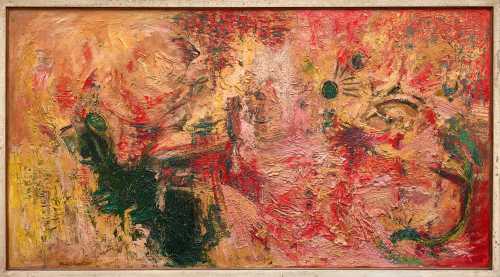
Sunrise, Ischia
Estimation
€50,000
55,885 USD
-
€80,000
89,415 USD
Realized Price
€152,800
170,784 USD
135.077%
Sell at
Sale Date
Bonhams
-
26 September 2024
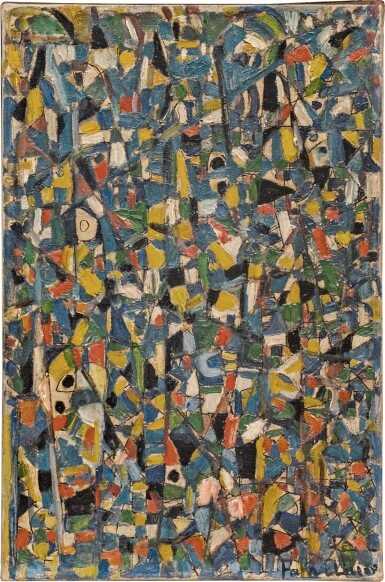
Erbil: Réalités Nouvelles
Estimation
£30,000
37,253 USD
-
£50,000
62,089 USD
Realized Price
£69,850
86,738 USD
74.625%
Sale Date
Sotheby's
-
25 April 2023
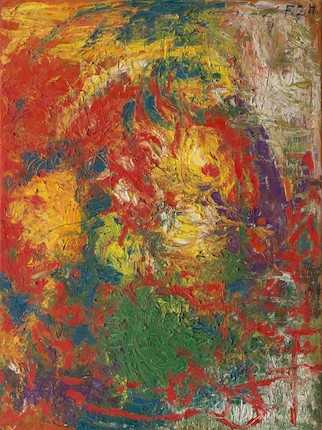
A Rooster at Dawn
Estimation
£40,000
50,756 USD
-
£60,000
76,134 USD
Realized Price
£124,860
158,436 USD
149.72%
Sale Date
Bonhams
-
5 June 2024
Realized Price
85,290 USD
Min Estimate
31,709 USD
Max Estimate
47,713 USD
Average Artwork Worth
+119.203%
Average Growth of Artwork Worth
Sales Performance Against Estimates
Average & Median Sold Lot Value
2020 - 2024
Performance vs. Estimate
2020 - 2024
Sell-through Rate
2020 - 2024
Similar Artworks
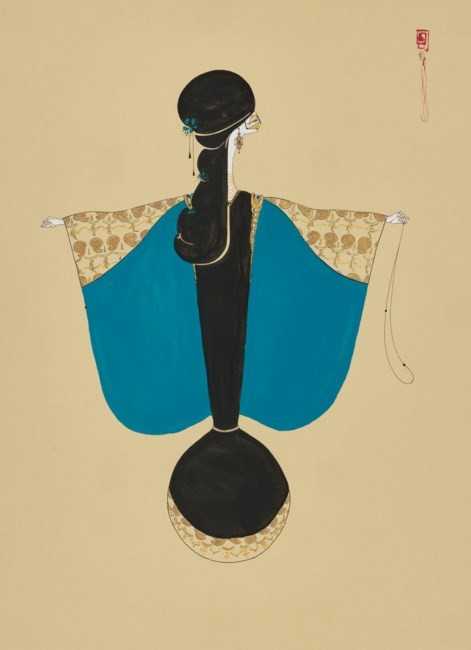
Untitled
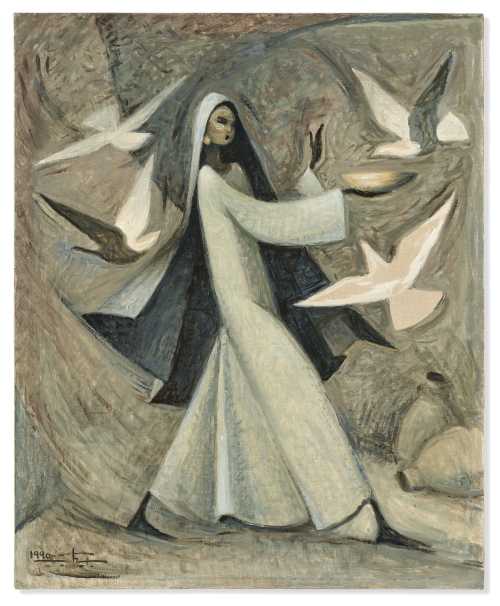
Misr al-Salaam (Egypt of Peace)
Estimation
£25,000
32,250 USD
-
£35,000
45,150 USD
Realized Price
£63,000
81,269 USD
110%
Sale Date
Christie's
-
31 October 2024
